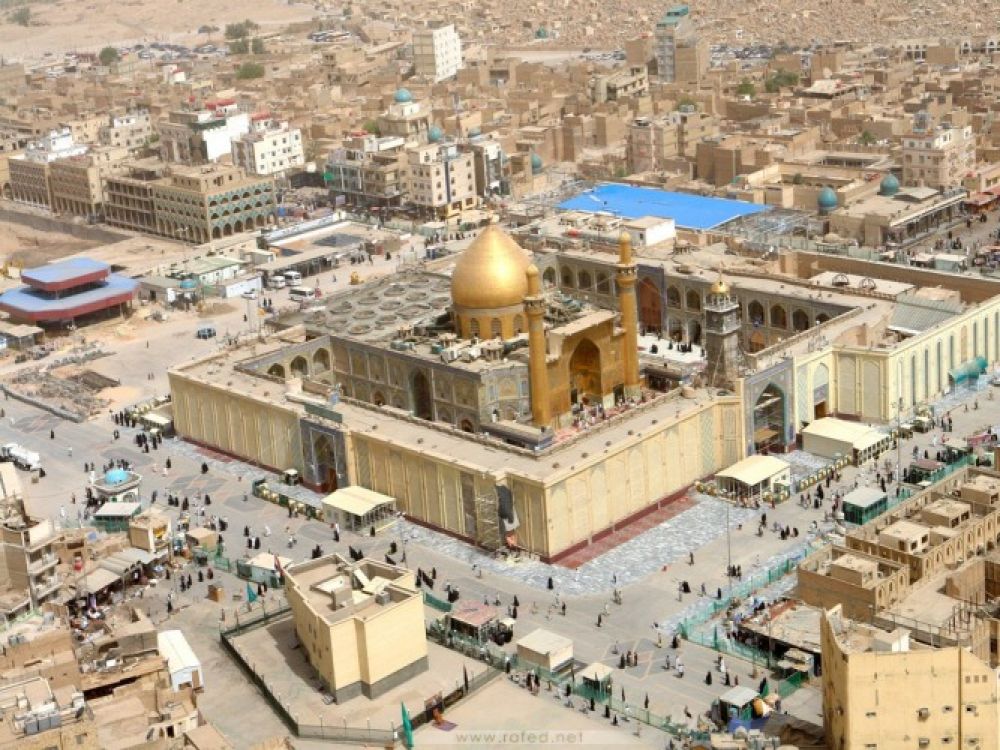

The city of Najaf in Iraq is one of the most important centers of theological learning in the Shi'a Islamic world and is a pivotal destination for millions of pilgrims every year. With a history deeply interwoven with the birth and spread of Islam, Najaf boasts one of the holiest sites, the Imam Ali Shrine. Here is how tourism has evolved in this venerable city:
The foundation of Najaf's religious significance goes back to 661 AD with the burial of Ali ibn Abi Talib, the cousin and son-in-law of Prophet Muhammad. Ali is also the first Imam for Shi'a Muslims, making his mausoleum, the Imam Ali Shrine, a site of monumental importance. Over the centuries, a city grew around this shrine, becoming a center for Islamic scholarship and spirituality.
In the early centuries, Najaf attracted scholars and students eager to study Islamic theology, jurisprudence, and philosophy. It wasn't uncommon for these scholars to take up permanent residence near the shrine, contributing to the city's rich intellectual and spiritual tapestry. As such, early tourism in Najaf was primarily educational and religious, with the city's infrastructure supporting these pursuits.
With the spread of Shi'a Islam, pilgrims began flocking to Najaf to pay respects at the Imam Ali Shrine. This pilgrimage, known as ziyarat, became a cornerstone of Shi'a Islamic practices. The city's economy and services evolved to accommodate the growing number of visitors, leading to better facilities and increased accessibility to the holy site.
Najaf has seen its share of conflict, which has, at times, severely affected its status as a destination for worship and study. The Iran-Iraq War and subsequent conflicts, including the Gulf War and the invasion of Iraq in 2003, led to periods where pilgrimage was dangerous or nearly impossible. However, each period of calm would see a resurgence of visitors, underscoring the enduring importance of Najaf in the hearts of the faithful.
In recent years, the situation in Iraq has stabilized somewhat, allowing for a renewed focus on improving the infrastructure to support the tourism industry. Efforts to renovate and expand the Imam Ali Shrine and surrounding areas have been underway, aiming to accommodate even more pilgrims.
The latest trend in Najaf tourism includes investment in hotel and transportation services, with the local government and international stakeholders looking to enhance the experience of pilgrims and secular visitors alike. Moreover, an increase in digital presence, with online ziyarat and virtual tours, has allowed those unable to travel an opportunity to connect with the city's spiritual offerings.
Looking ahead, Najaf is focused on sustainably expanding its tourism capacity. The city aims to preserve its holy sites and cultural heritage while introducing modern amenities that cater to the needs of international visitors. Promotion of cultural tourism, alongside the traditional religious pilgrimage, is envisioned to diversify the appeal of Najaf, encouraging visitors to explore the city's rich history and contribute to its continuous revitalization.
In conclusion, Najaf's tourism history is as rich and complex as the city itself. Having been shaped by the faithful for centuries, it stands today as a beacon of religious devotion and historical intrigue, ready to welcome the world with open arms and a story at every corner.